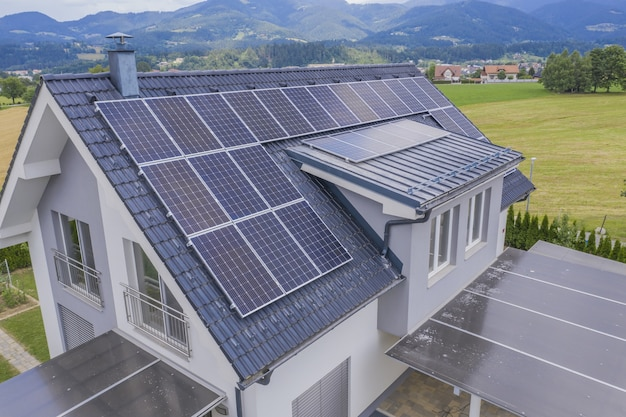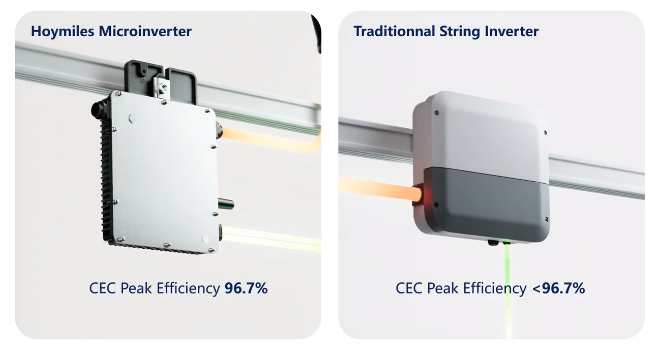The Ultimate Guide on Going Solar — All About Residential Solar System
Table of Contents
The world faces two major concerns currently, i.e., the growing cost of living and climate change. That’s why there is a growing importance of going solar, as it provides a greener and more cost-effective way to fulfill power needs. Therefore, governments are encouraging families to consider the construction of a home solar system. So, this article provides a step-by-step guide on how to set up a residential solar system and have a seamless journey of going solar.
Step-by-Step Guide to Set Up a Residential Solar System
Going solar for your residential property involves plenty of steps so that your investment aligns with the results you are expecting. So, follow the below steps one by one and head for your solar journey smartly:
Step 1. Assessing Solar Potential
First, you should start by assessing your property’s solar suitability. Your property should be located in a place where you get enough sunlight exposure. The key factors to consider for assessing the solar potential include:
- Location: There are often localities that remain surrounded by clouds most of the time. Therefore, the geographical location is vital, as the amount of sunlight exposure reflects the amount of solar energy you can harness and the estimated output you can generate.
- Shading:For optimal performance, your home should ideally be free from obstructions such as trees or neighboring buildings. Other potential hindrances, like chimneys or ventilation systems, can also cause issues by casting shadows on your solar panels, significantly reducing their efficiency. However, a practical solution to this problem could be the use of module-level micro-inverters, which are specifically designed to mitigate such challenges
- Roof:Since many households place solar panels on the roof, its condition is also important. Flat or south-facing roofs are considered ideal, as they lead to maximum sunlight exposure for solar panel Hoymiles offers modular micro-inverters that can adapt to a variety of roof shapes, thereby providing flexible and tailored solar solutions for diverse architectural designs.
Once you are sure that your house is ideal for the solar system, head to the next steps.
Step 2. Financial Considerations
A residential solar system requires a significant initial investment. So, you must estimate the costs of going solar before purchasing solar panels.
Two main costs are associated with going solar, i.e., equipment and labor costs. Regarding the equipment cost, you should evaluate what solar system capacity you want to install and then explore the prices of solar panels, inverters, mounting hardware, and other components. Similarly, estimate the labor cost accordingly. This way, you can get a rough estimate of the overall installation cost.
However, you should also look for the available incentives, tax credits, and financing options. Different governments are offering different kinds of incentives to residents to encourage solar system installation. Therefore, explore the incentives as per your locality and adjust the overall cost accordingly. You can check out our Solar Financing Guide for more details on this topic.
Once you know the installation cost, estimate the savings you can get from the solar system, afterward, divide the installation cost by annual savings to get the solar payback period.
Step 3. Choosing the Right Solar System
Once you have checked the financial considerations, the next step is choosing the right solar system. There are three main types of solar panels you can choose from, as follows:
- Monocrystalline solar panels with high efficiency(~20%)
- Polycrystalline Solar Panels with relatively lower efficiency(~15%)
- Thin-Film Solar Panelswith lowest efficiency (~7-10%)
Similarly, there are two types of inverters to choose from, such as:
- String Inverter– Convert the DC electricity from all panels in the string to AC electricity.
- PV Microinverter– Installed on each solar panel for greater efficiency and monitoring.
The type of solar panels and inverter you choose depends on your energy needs and budget. Therefore, you should estimate the size of your system to determine the amount of energy you want to generate through solar panels. For that, calculate your monthly electricity consumption along with any additional demand you need in the future; the uncertainty in electricity consumption also indicates the importance of the expandability of the microinverter. Based on that, size your system effectively and choose a future-proof one, e.g. the microinverter provided by Hoymiles.
Step 4. Permitting and Regulations
Going solar also requires you to consider the permits and regulations you must fulfill. Some of the necessary permits and regulations to consider include:
- Permit from local building authority for the approval of new construction.
- Permit from the electric company for the approval of grid interconnection.
- Follow solar installation standards set by the state.
- PV installation according to the International Residential Code or International Building Code and National Electrical Code (NFPA 70).
- And many more.
Basically, the permits and regulations vary differently in different areas. Therefore, you should check your local requirements by contacting the local building department or exploring the permits/regulations on the web specific to your local area.
Step 5. Finding a Solar Installer
Once you have reached this step in your journey of going solar, you have reached the last step. Now, you have to find a trustworthy solar installer. Below are the tips that can help you find a reliable solar installer:
- Review past experiences and track records
- Check licenses and certifications
- Evaluate warranty and support
- Obtain quotes from multiple shortlisted solar installers
- Check online reviews of customers
- Inspect equipment quality
- Evaluate potential cost savings
In short, you need to spend proper time finding a reliable solar installer. Besides relying entirely on the solar installer for the components, you should pick the best quality solar-related equipment yourself.
Hoymiles is one such ideal place for you to get top-notch solar devices. Our microinverters especially give you the ultimate level of performance, precision, and efficiency.
We have different types of PV microinverters tailored for different regions. Our microinverters offer 96.7% CEC peak efficiency and require low voltage to start. And since each solar panel has its microinverter, it reduces overall solar generation degradation impacts if some panels malfunction due to shadow or other reasons.
Long-Term Benefits of Using Hoymiles Going Solar Solution
We have helped many households achieve long-term benefits with our advanced solar solutions. Below are some comments from installers, reflecting the remarkable experience they had with our innovative PV microinverters:
“Another family is happy for the savings on their electricity bill thanks to Hoymiles. They are now enjoying cooler summer while taking care of the environment.”
“Hoymiles microinverters allowed us to design the ideal project by putting panels on various orientations that wouldn’t be have been possible with conventional string inverters.”
Wrapping Up
Going solar for your residential property is highly recommended in today’s costly living and global climate concerns. However, it requires you to thoroughly go through each stage of solar system installation for long-lasting benefits. On top of that, choosing top-notch solar equipment can elevate the whole experience.
With this promise, Hoymiles offers you the best microinverters you need for more efficient solar power generation. So, explore our top-notch solar solutions and take your first step toward a sustainable and environmentally friendly solar-powered residential experience.



